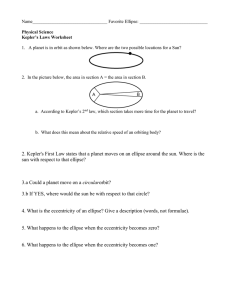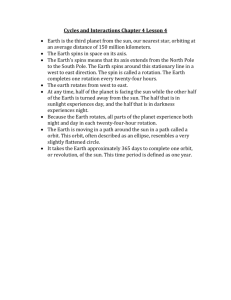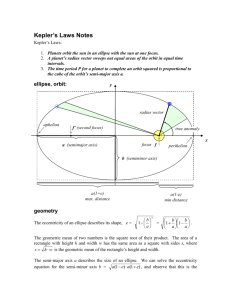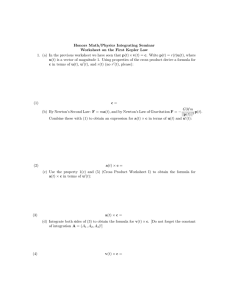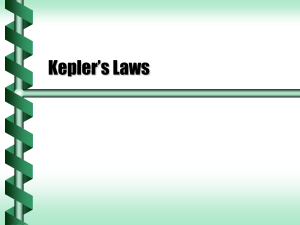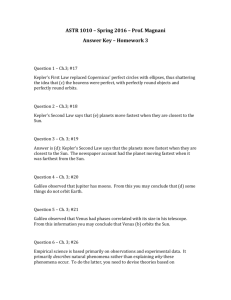Answers to Kepler's Laws Review
advertisement
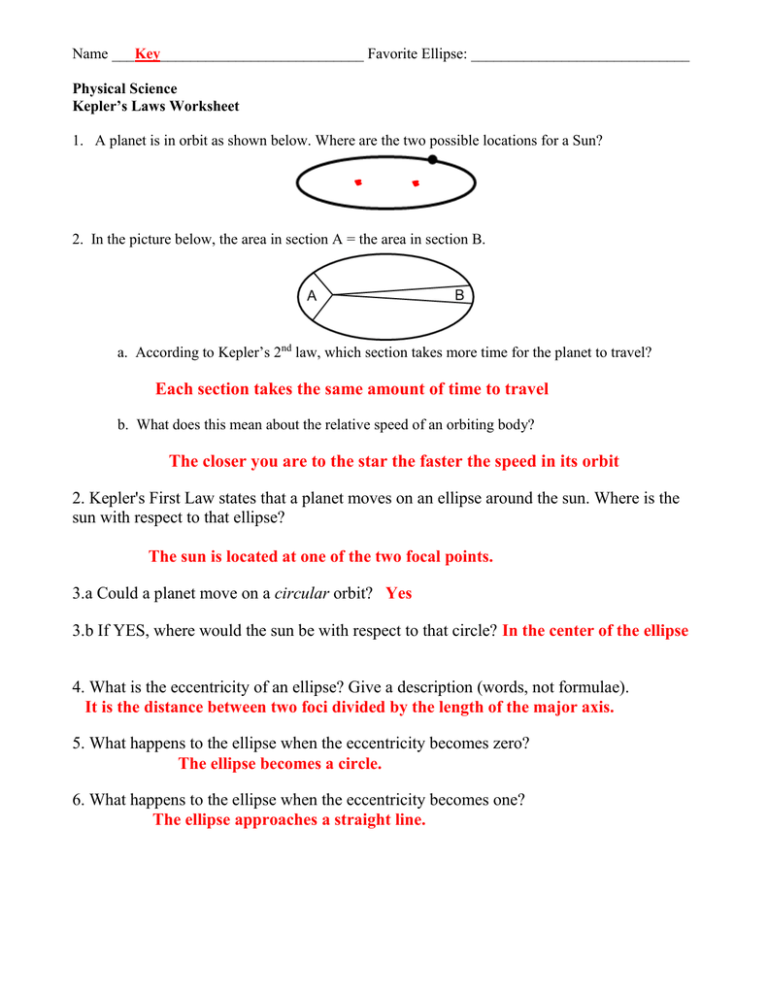
Name ___Key___________________________ Favorite Ellipse: _____________________________ Physical Science Kepler’s Laws Worksheet 1. A planet is in orbit as shown below. Where are the two possible locations for a Sun? 2. In the picture below, the area in section A = the area in section B. a. According to Kepler’s 2nd law, which section takes more time for the planet to travel? Each section takes the same amount of time to travel b. What does this mean about the relative speed of an orbiting body? The closer you are to the star the faster the speed in its orbit 2. Kepler's First Law states that a planet moves on an ellipse around the sun. Where is the sun with respect to that ellipse? The sun is located at one of the two focal points. 3.a Could a planet move on a circular orbit? Yes 3.b If YES, where would the sun be with respect to that circle? In the center of the ellipse 4. What is the eccentricity of an ellipse? Give a description (words, not formulae). It is the distance between two foci divided by the length of the major axis. 5. What happens to the ellipse when the eccentricity becomes zero? The ellipse becomes a circle. 6. What happens to the ellipse when the eccentricity becomes one? The ellipse approaches a straight line. 7. On planet Blob the average global temperature stays exactly constant throughout the planet's year. What can you infer about the eccentricity of Blob's orbit? The eccentricity of Blob’s orbit is close to zero. 8. On planet Blip the average global temperature varies dramatically over the planet's year. What can you infer about the eccentricity of Blip's orbit? The eccentricity of Blip’s orbit is very eccentric since the distance to the sun must vary dramatically. 9.Use the diagram below to explain how and why a planet’s speed changes as it travels around its sun. Think about when a planet travels faster/slower in its orbit. As the planet gets closer to the sun the gravitational pull increases so the speed in its orbit increases therefore it is able to cover a larger distance in its orbit in space. As it moves away from the sun it slows down and the distance it can cover decreases.
